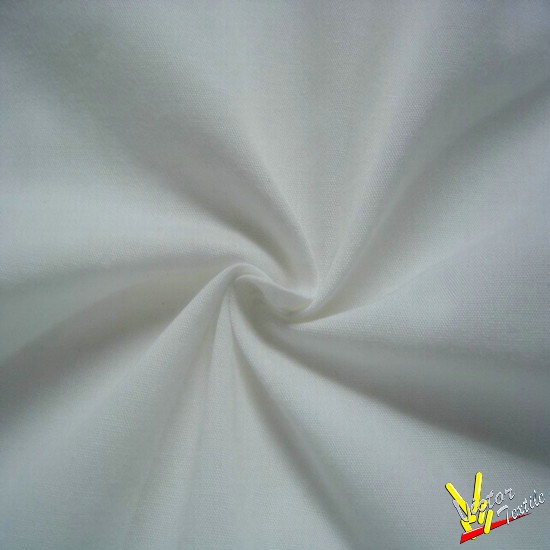Qingdao Victor Textile Co., Ltd
http://www.victortex.com
2013年4月19日星期五
Offer Fabrics-Victor Textile
We are fabric weaving mill in China, if you need the following fabrics, pls add my skype: aileenvictor
CD20x20 108x58 63” 3/1 SHTL
CD20x16 128x60 63” 3/1 SHTL
CD20x20 60x60 50”/63”/67” 1/1 SHTL
CD30x30 68x68 50”/63”/67” 1/1 SHTL
CD/CM30x30 130x68 63” 2/1 SHTL &A/J
CD/CM40x40 133x72 47”/63” 1/1 SHTL& A/J
CM40x40 133x100 63” 1/1 A/J
CM40x40+40D 96x72 65” 1/1 A/J
CM50x50+40D 120x70 65” 1/1 A/J
CM50x50 144x80 63” 1/1 A/J
CM60x60 90x88 50”/64” 1/1 SHTL
CM60x60 90x88 64” 1/1 A/J
CM80x80 90x88 64” 1/1 A/J
CM100x100 90x88 65” 1/1 A/J
CM60x60+30D 132x80 65” 1/1 A/J
CM60x60 147x89 63” 1/1 A/J
CM60x60 136x128 63” 1/1 A/J
CM60x60 173x112 67” 4/1 A/J
CM60x60 204x108 63” 4/1 A/J
CM80x80 165x105 63” 4/1 A/J
T/CD65/3520x20 108x58 63” 3/1 SHTL
T/CD65/3530x30 130x68 63” 2/1 SHTL
T/CD65/35 & 80/2045x45 88x64 47”/63” 1/1 SHTL
T/CD65/35 & 80/2045x45 96x72 47”/63” 1/1 SHTL
T/CD65/35 & 80/2045x45 110x76 47”/63” 1/1 SHTL
T/CD65/35 & 80/2045x45 133x72 47”/63” 1/1 SHTL
CVCM55/4545x45 110x76 63” 1/1 SHTL& A/J
CVCM55/4545x45 133x72 63” 1/1 SHTL &A/J
2012年9月3日星期一
Chinese textile companies show great interest in Australian cotton farm
Keith De Lacy, the president of Cubbie Station, the biggest cotton farm and irrigator in Australia, currently show his supporting Chinese takeover of this farm, however, he asks for remaining the local management.
Chinese textiles giant Shandong Ruyi has lodged an application with the Foreign Investment Review Board to buy Cubbie, the 96,000ha southern Queensland station placed into voluntary administration in 2009.
Mr Loh, Shanghai-based cotton trader, told that China was the world's largest producer, consumer and importer of cotton. In the 2011-12 season, China produced 7.3 million tonnes of cotton and consumed 8.7 million tonnes.
Wang Yuhui, president of two successful Chinese textile companies, said that while his operations had no concrete plans to buy or invest in cotton farms in Australia, it was something he was considering.
"This is a good choice for whole-chain manufacturing," Mr Wang, president of Hebei Spring Textiles and Hebei Xindadong Textiles Printing and Dyeing, said through a translator.
"We don't have exactly a plan; we just think about it and consider it. But lots of Chinese mills may be very interested."
His mills process more than 26,000 tonnes of cotton each year, of which 15,000 tonnes are imported from Australia.
He said textiles companies aimed for the "whole-chain" system, which meant they controlled the cotton from when it was grown to when it was transformed into garments and marketed.
Mr Wang said he believed it was cheaper to grow cotton in Australia, where it was picked by machines, than in China, where it was picked by hand.
"The quality of Australian cotton is really good, especially with not any contamination (because it is machine-picked)," he said.
"The cost of labour in China is increasing and in Australia the farm is very big and the production is centralised.
Pages from www.victortex.com
2012年8月30日星期四
Peru Lifted Anti-Dumping Duties On Chinese Fabrics

The South American country of Peru has removed anti-dumping duties on Chinese blended fabrics, including rayon-viscose and cotton-fiber fabrics, among others.
The duties have removed with effect from May 26, 2012, according to a statement issued by the National Institute for the Defense of Competition and Intellectual Property Pretction.
The Peruvian Anti-Dumping and Subsidies Commission had imposed anti-dumping duties on Chinese blended fabrics in 2009. Subsequently, the Commission ordered a review of the levy in March this year.
In 2010,the Peru-China Free Trade Agreement (FTA) came into effect, which has greatly improved bilateral trade between the two countries.
Hope this move can promote the cooperation between Peru and China.
Pages from www.victortex.com
Global Cotton Output Increase in August Estimates

The U.S. 2012/13 cotton supply and demand estimates include larger production and ending stocks compared with last month. Domestic mill use is unchanged.
Exports remain forecast at 12.1 million bales, despite the larger supply, due to reduced import demand by China. Ending stocks are now forecast at 5.5 million bales, equal to 35 percent of total use. The range for the marketing year average price received by producers is narrowed 1 cent on each end to 61 to 79 cents per pound.
Beginning stocks are raised nearly 2.0 million bales in China as a result of adjustments to 2011/12 which both increase imports and reduce consumption. The higher China stocks are partially offset by lower beginning stocks in Australia, Malaysia, Pakistan, and others, resulting in a net global increase of 1.1 million bales.
World production is raised 300,000 bales, as increases for the United States, China, Burkina Faso, and Mali are partially offset by lower production for India, Brazil, Argentina, and others. World consumption is reduced 820,000 bales, due mainly to reductions for China and Pakistan. World trade is reduced slightly, as lower imports by China are partially offset by small increases for several countries.
World stocks are raised to 74.7 million bales, including an increase of nearly 2.4 million bales in stocks held by China; lesser increases for the United States, Pakistan, and Uzbekistan are about offset by decreases for India, Australia, and Brazil.
Projected China stocks of 34.2 million bales account for 46 percent of the world stocks forecast, and assume a net increase in China’s national cotton reserve of about 20 percent during 2012/13.
Pages from www.victortex.com
China textile is facing severe challenge
China is losing her competitive advantage in textile business.
Firstly, material prices, especially for cotton, are much higer than that of abroad, usually 3000 - 4000 RMB more per ton than imported cotton. This causes production cost raise a lot.
Secondly, labor cost is more and more expensive now, for a normal textile worker, their salary now is over 2000 RMB, which is about 4 times of Bangladesh, Pakistan, India, and some other developing textile big countries, they are building up more capacity in textile manufacturing.
Thirdly, the electicity price also raised a lot, even the Government take actions to restrict electricity use, which all influence a lot for the production scale. Because of the production cost raised a lot, now bigger importers from U.S.A, European countries are turning to Vietnam, Indonesia, India and some other countries.
China is losing her advantage day by day!
Pages from www.victortex.com
2012年8月29日星期三
the Winter Solstice Festival of China

The Northern hemisphere on this day experiences the shortest daytime and
longest nighttime. After the Winter Solstice, days will become longer and
longer. As ancient Chinese thought, the yang, or muscular, positive
things will become stronger and stronger after this day, so it should be
celebrated.
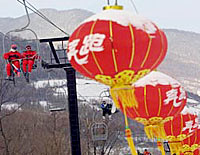
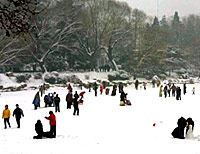
In some parts of Northern China, people eat dumpling soup on this day;
while residents of some other places eat dumplings, saying doing so will keep
them from frost in the upcoming winter. But in parts of South China, the whole
family will get together to have a meal made of red-bean and glutinous rice to
drive away ghosts and other evil things. In other places, people also eat
tangyuan, a kind of stuffed small dumpling ball made of glutinous rice
flour. The Winter Solstice rice dumplings could be used as sacrifices to
ancestors, or gifts for friends and relatives. The Taiwan people even keep the
custom of offering nine-layer cakes to their ancestors. They make cakes in the
shape of chicken, duck, tortoise, pig, cow or sheep with glutinous rice flour
and steam them on different layers of a pot. These animals all signify
auspiciousness in Chinese tradition. People of the same surname or family clan
gather at their ancestral temples to worship their ancestors in age order. After
the sacrificial ceremony, there is always a grand banquet.
Pages from www.victortex.com
the Double Ninth Festival of China
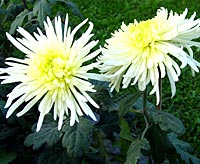
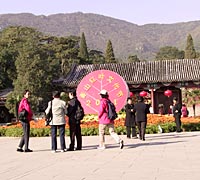
On this day, people will eat Double Ninth Gao (or Cake). In
Chinese, gao (cake) has the same pronunciation with gao
(height). People do so just to hope progress in everything they are engaged in.
There is no fixed ways for the Double Ninth Cake, but super cakes will have as
many as nine layers, looking like a tower.
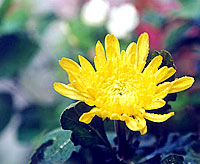
In 1989, the Chinese government decided the Double Ninth Festival as
Seniors' Day. Since then, all government units, organizations and streets
communities will organize an autumn trip each year for those who have retired
from their posts. At the waterside or on the mountains, the seniors will find
themselves merged into nature. Younger generations will bring elder ones to
suburban areas or send gifts to them on this day.
Pages from www.victortex.com
订阅:
评论 (Atom)


